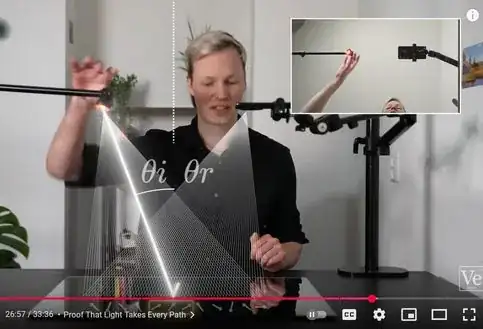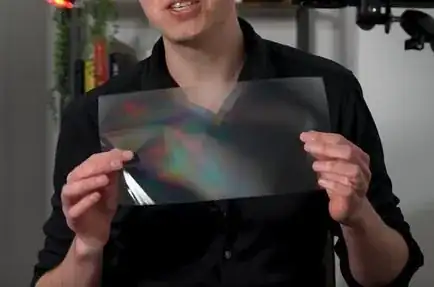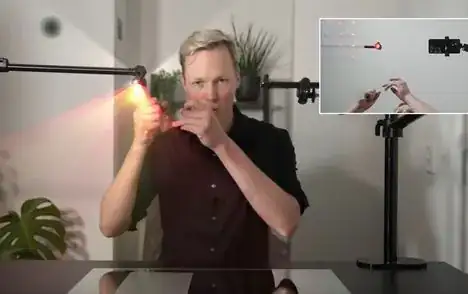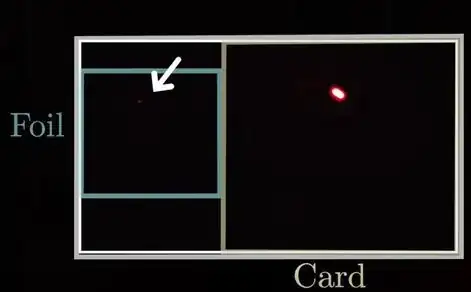This question is triggered by a section in the Veritasium video "Infinite Slit Paradox: Something Strange Happens When You Trust QM" about Feynman's path integral that came out on March 5, 2025.
At 25:02 into the video there is a section titled Proof that light takes every path That section is presented by Casper Mebius.
Casper Mebius is a team member of the Veritasium team, he is credited as director and co-writer.
Casper Mebius first presents reflection of lamp light against a mirror.
For the next demonstration most of the mirror is covered with a sheet of black cardboard, and vertically underneath the light source a reflective diffraction grating is placed. Then diffracted light reaches the camera.
Then Casper Mebius mentions that the light from the lamp propagates away from the lamp as a wide cone, so it will reach everywhere anyway.
What if a laser pointer is used, and the beam is pointed not at the diffraction grating, but at an angle to that direction. Casper Mebius proceeds to point the laser pointer such that if the black sheet would not be there the laser pointer would reflect in the mirror, towards the camera.
The screenshot from the video shows the result:
On the black sheet there is a bright spot from the laser pointer visible, and coming from the reflective diffraction grating there is a faint spot visible.
Caspar Mebius is convinced that this demonstration is proof that light takes every path, with the camera registering light when the phases line up.
However, it seems to me this demonstration is not sufficient.
For any beam forming there are two diffraction effects that affect the distribution of emitted energy.
A well know diffraction effect is Beam divergence There is a minimum possible value. Of course, in this demonstration by Casper Mebius beam divergence is not a factor.
Diffraction in general: at any discontinuity energy radiates out in all directions, including at a high angle to the direction of source of the light.
The (edge of the) collimating lens of the laser pointer gives rise to diffraction effect. By far most of the energy remains in the beam, but some energy goes out as a wide cone.
I expect that the latter is at work in that Casper Mebius demonstration. I think the bright/faint difference is a clue. I expect that they had to turn the camera to its highest sensitivity, and that the bright spot (on the black sheet) is far over-exposed.
For a laser pointer (and any beam-emitting laser source in general): of course the luminosity of the wide-cone-diffracted-light is so much lower that it is overwhelmingly unlikely to ever affect the course of any experiment. It's easy to be unaware of it.
It would appear that Casper Mebius' thinking is dependent on assumption that for a laser pointer there is zero luminosity outside of the collimated beam.
Question:
Is this particular scepticism valid?
Is there enough diffraction at the point where the laser light exits the laser pointer to account for the faint spot?
To avoid misunderstanding: I'm not objecting to the proposition that light takes all paths; I don't have an opinion on that interpretation.
The point I'm raising is: I think this Casper Mebius demonstration is not sufficient.
[Later edit]
I just visited the comment section of that video. In multiple comments, each with many likes, it is pointed out that the cheap laser pointer that is used has a lot of stray light. So it appears that Casper Mebius didn't even think to avoid stray light.
So that demonstration is refuted with much simpler means than I suggested in this question.



